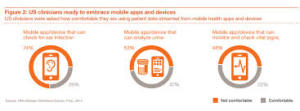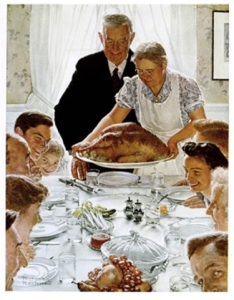 Consumers’ growing health care cost burden is competing with other household spending: basic costs for Americans are eroding what’s left of the traditionally-defined Middle Class. At the front end of health costs is the health insurance premium, the largest single line item for a family. It looks like a big number because it is: Milliman gauged the cost for an employer to cover a family of four in a PPO in the U.S. at around $23K, with the employee bearing an increasing percent of the premium, copays, coinsurance, and a larger deductible this year than last, on average.
Consumers’ growing health care cost burden is competing with other household spending: basic costs for Americans are eroding what’s left of the traditionally-defined Middle Class. At the front end of health costs is the health insurance premium, the largest single line item for a family. It looks like a big number because it is: Milliman gauged the cost for an employer to cover a family of four in a PPO in the U.S. at around $23K, with the employee bearing an increasing percent of the premium, copays, coinsurance, and a larger deductible this year than last, on average.
There are other costs, though, that in aggregate also hit family budgets when one or more people are managing chronic medical conditions: diabetes, heart disease, cancers, among them. While the top-line cost of a health premium hits hard as a single budgetary line item, the costs of managing a chronic condition add up and eat into other household spending…as well as potentially adding to the family debt burden, where health costs drive up the rate of personal bankruptcies in the U.S.
That’s where self-care, or HealthcareDIY, can make a difference, for individuals, and in populations, in the cost curve for health insurance plan sponsors (employers, government agencies).
“Do-it-yourself healthcare” was cited as #1 in 2015’s top health industry issues in PwC’s forecast for the new year, where the firm says “outlines of a market emerge.”
PwC focuses on clinicians’ use of “high-tech personal medical kits” to help patients diagnose, anticipate medical problems, and do therapy remotely from the doctor’s office and hands-on care. This is a sensor-driven scenario where clinicians essentially prescribe patients’ use of mobile apps and devices for monitoring health and managing illness. Providers should collaborate on developing “apps formularies” with developers, crowdsourcing tools that work best.
The approach here is one of “push” to the patient, and less the health consumer’s self-determination.
 Health Populi’s Hot Points: Most consumers already self-care in ways in which doctors may or may not be involved. Over-the-counter drugs, vitamins/minerals/supplements, using food for health, alternative providers like chiropractors and nutritionists, consulting with pharmacists for personal medical issues, and other retail health modes are growing in consumer preference, as people seek more convenient, cost-effective, culturally sensitive choices for managing their and their families’ health. This is a new extension of primary care, extending physicians’ arms, hands and influence to the home. People undertaking greater self-care must be part of the solution to address the primary care physician shortage.
Health Populi’s Hot Points: Most consumers already self-care in ways in which doctors may or may not be involved. Over-the-counter drugs, vitamins/minerals/supplements, using food for health, alternative providers like chiropractors and nutritionists, consulting with pharmacists for personal medical issues, and other retail health modes are growing in consumer preference, as people seek more convenient, cost-effective, culturally sensitive choices for managing their and their families’ health. This is a new extension of primary care, extending physicians’ arms, hands and influence to the home. People undertaking greater self-care must be part of the solution to address the primary care physician shortage.
Promoting HealthcareDIY requires donning a consumer marketer’s hat, so this new campaign from J&J’s Tylenol hits the nail on the head in getting several key values just-right. Engaging the granddaughter of the classic American family-values artist Norman Rockwell to be the face and voice of this ad, which features diverse portrait of American families (straight, gay, multi-ethnic, multi-parent) flavors the campaign with community and public health. This puts self-care in middle-marketville where the concept needs to grow and become part of real life-flow. While OTC products already play a major role in American health care, more Rx’s will switch in the coming years and broaden the concept of how the person’s home can become her first medical home.




 I am so grateful to Tom Lawry for asking me to pen the foreword for his book, Health Care Nation,
I am so grateful to Tom Lawry for asking me to pen the foreword for his book, Health Care Nation,  I love sharing perspectives on what's shaping the future of health care, and appreciate the opportunity to be collaborating once again with Duke Corporate Education and a global client on 6th May. We'll be addressing some key pillars to consider in scenario planning such as growing consumerism in health care, technology (from AI to telehealth), climate change, and trust -- the key enabler for health engagement or dis-engagement and mis-information. I'm grateful to be affiliated with the corporate education provider
I love sharing perspectives on what's shaping the future of health care, and appreciate the opportunity to be collaborating once again with Duke Corporate Education and a global client on 6th May. We'll be addressing some key pillars to consider in scenario planning such as growing consumerism in health care, technology (from AI to telehealth), climate change, and trust -- the key enabler for health engagement or dis-engagement and mis-information. I'm grateful to be affiliated with the corporate education provider  Thank you FeedSpot for
Thank you FeedSpot for